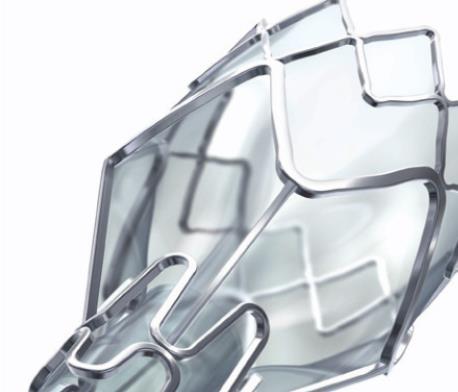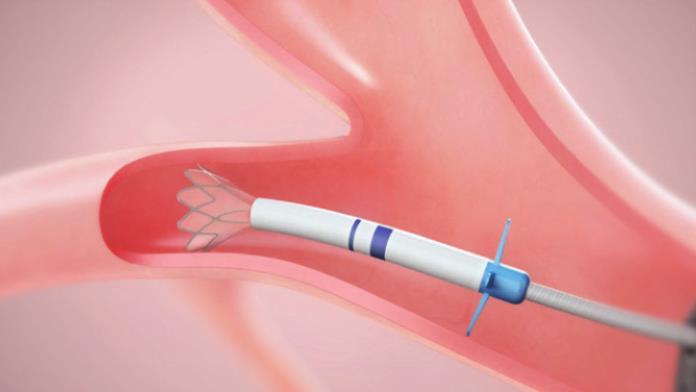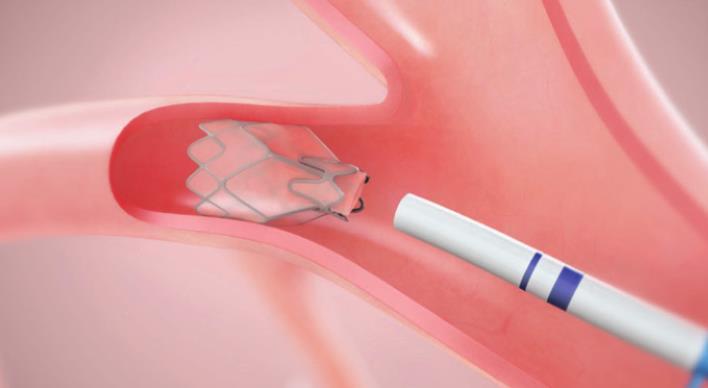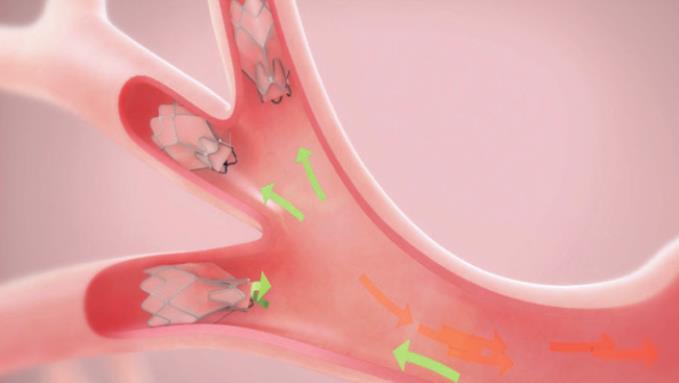TOLEDO-AREA RESIDENTS WITH SEVERE EMPHYSEMA who consistently feel short of breath despite using medications or oxygen therapy may be able to breathe a little easier now thanks to the advent of the Zephyr ® Endobronchial Valve, a state-of-the-art new treatment option offered by Mercy Health. This minimally invasive lung-volume-reduction procedure, performed during a simple bronchoscopy with no need for the cutting or incisions associated with traditional surgical approaches, helps emphysema patients breathe better, increase their activity level, and experience a significantly improved quality of life.
Pulmonologist Salil Avasthi, MD, of Mercy Health – Respiratory Specialists states that emphysema, a form of chronic obstructive pulmonary disease (COPD) seen predominantly in smokers, develops when the air sacs in the lungs become damaged, reducing the amount of surface area available for oxygen exchange and causing air trapping in the lung, or hyperinflation, which applies pressure to the diaphragm. Due to all these factors, patients with this condition feel they’re unable to take a deep breath.
According to Dr. Avasthi, “Traditional care for emphysema involves breathing treatments with bronchodilators, and if the patient gets worse, we can use oxygen therapy. Of course, the patient is also advised to stop smoking. Traditional surgery can also be used to cut away damaged areas of the lung. However, patients with emphysema commonly have heart disease, putting them at greater risk of complications from surgery. Furthermore, traditional lung-volume-reduction surgery has a prolonged healing and recovery time. In contrast, the Zephyr Valve is minimally invasive and involves no cutting whatsoever, and if the valve causes any problems, we can simply take it out.”
Dr. Avasthi explains that during this one-time procedure—which is performed with the help of small, flexible lighted tube called a bronchoscope—several properly sized Zephyr valves (four on average) are placed into the damaged area of the lung. “These one-way valves allow air to escape with exhalation but prevent air from re-entering the damaged area with inhalation. As a result, the damaged portion of the lung slowly collapses, preventing air from getting trapped in the diseased area and lifting pressure off the diaphragm, and the healthy area can then expand and take in more air, allowing for better breathing,” he says.
Good candidates for the Zephyr Valve are individuals who have known or suspected emphysema and hyperinflation, breathlessness despite taking medications, and a relatively high degree of airway obstruction. Dr. Avasthi adds, “Prior to the procedure, the patient will also be given a high-resolution scan, which will then be uploaded into software to identify the target lobes, or those that have the highest degree of damage. In addition, the doctor will determine whether any collateral ventilation might be present—in other words whether any adjacent healthy parts of the lung can refill the damaged area with air—before proceeding with the valve placement.”
Following the procedure, the patient will need to stay in the hospital for up to three days for observation to ensure the valves are performing as intended and to monitor the patient for pneumothorax, which occurs in approximately 30 percent of cases. “As the diseased portion of the lung collapses, it’s possible for an air pocket to form, in which case we need to put in a tube and draw out the air,” says Dr. Avasthi.
The latest research shows that patients who undergo this procedure experience improvement in their lung function and overall health status, reduced gas trapping in the lungs, reduced breathlessness, greater ability to exercise, and better quality of life. Patients report being able to take full breaths immediately after the procedure and are typically back to doing everyday tasks with ease within a matter of days.
The first FDA-approved, minimally invasive device available in the US for treating patients with severe emphysema, the Zephyr Endobronchial Valve is also gaining attention worldwide. Dr. Avasthi notes that over 15,000 patients have been treated with this procedure globally, and the Zephyr Valve is now included in the guidelines for treating severe emphysema by the Global Initiative for Chronic Obstructive Lung Disease, the UK’s National Institute for Health and Care Excellence, The German Respiratory Society, the National Health Care Institute of the Netherlands, and Lung Foundation Australia.
Mercy Health – Respiratory Specialists is located at 2222 Cherry Street, Suite 1400, Toledo, Ohio, 43608. For more information, please call 419-251-4790 or visit mercy.com.







